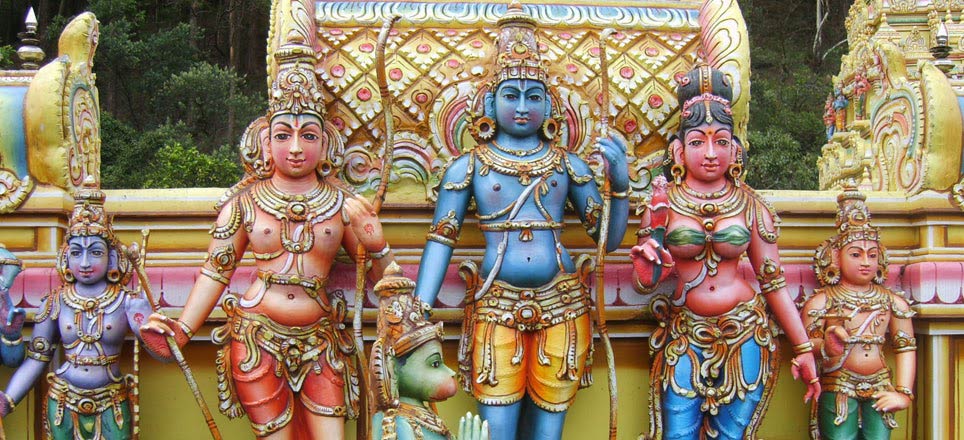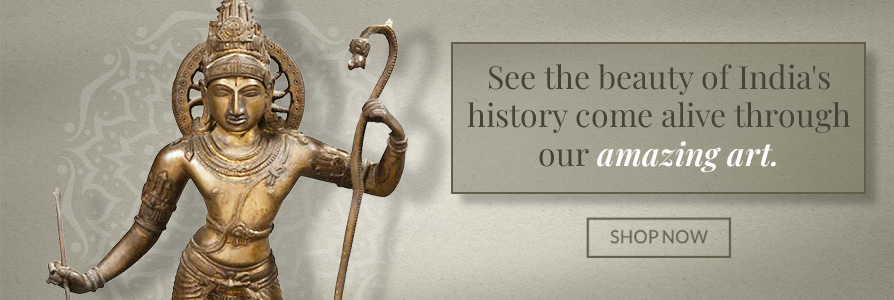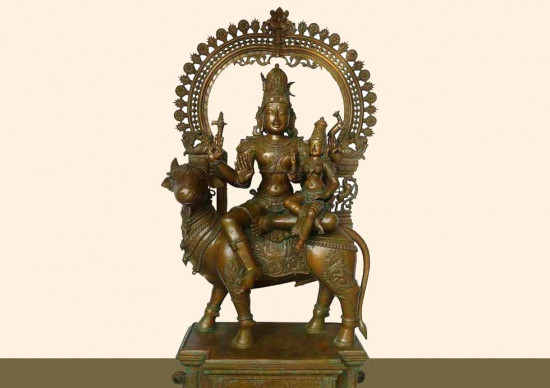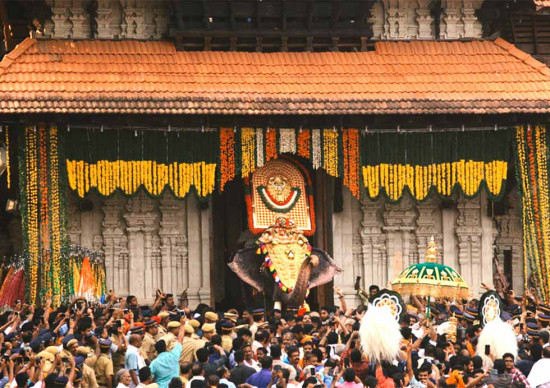
“No I’m not talking about that Ram who is the son of Dasharatha of the clan of the Raghus.” Droned on a cosmopolitan “acharya” of yore in one of his taped lectures.
“I’m talking about that Ram who is everywhere, in everyone as their essence.”
In one stroke he split Ram in two, then immediately rejected the part that was the darling of billions. The other part, a hollow abstraction he acknowledged, was good to ensure that his audience remained intact in people who would keep returning seeking explanation of which.
The strategy is very blunt and rightly so if you want to shake the roots of a people. Do it bold and blunt, people might just take it on its face value.
A lot have.
This is one school. There is another that is lot gentler.
So Ram is acknowledged as being the highest reality as Vishnu but he is denied any history. The gentle suggestion is that ascribing him history would reduce him to a mere historical figure. Another way of making Ram irrelevant while appearing to revere him.
Many have fallen for such crocodile-tears-like reverence.
Contrary to both, Vaalmeeki – the original author of Ramayana – accepts Ram as much a metaphysical reality as a Vishnu incarnate and a historical personality.
The above two surreptitiously malevolent schools have had a profoundly damaging effect on how Indians view their tradition, which is scripture based largely.
Since Indian art too has been mainly scripture based it stands to suffer its share of damage. How and why of this is the theme of this article.
Veda pervades Indian psyche. Anything Indian is invariably Shastra based. Dance, music, architecture, administration, law, philosophy, literature, erotica, art, cuisine, fitness, medicine, science and the list goes on.
Veda is the base of India and soul of Indians.
Veda is based on the solid foundation of reality. It had to else a full-fledged glorious civilization could not have emerged out of it.
“I’m talking about that Ram who is everywhere, in everyone as their essence.”
In one stroke he split Ram in two, then immediately rejected the part that was the darling of billions. The other part, a hollow abstraction he acknowledged, was good to ensure that his audience remained intact in people who would keep returning seeking explanation of which.
The strategy is very blunt and rightly so if you want to shake the roots of a people. Do it bold and blunt, people might just take it on its face value.
A lot have.
This is one school. There is another that is lot gentler.
So Ram is acknowledged as being the highest reality as Vishnu but he is denied any history. The gentle suggestion is that ascribing him history would reduce him to a mere historical figure. Another way of making Ram irrelevant while appearing to revere him.
Many have fallen for such crocodile-tears-like reverence.
Contrary to both, Vaalmeeki – the original author of Ramayana – accepts Ram as much a metaphysical reality as a Vishnu incarnate and a historical personality.
The above two surreptitiously malevolent schools have had a profoundly damaging effect on how Indians view their tradition, which is scripture based largely.
Since Indian art too has been mainly scripture based it stands to suffer its share of damage. How and why of this is the theme of this article.
Veda pervades Indian psyche. Anything Indian is invariably Shastra based. Dance, music, architecture, administration, law, philosophy, literature, erotica, art, cuisine, fitness, medicine, science and the list goes on.
Veda is the base of India and soul of Indians.
Veda is based on the solid foundation of reality. It had to else a full-fledged glorious civilization could not have emerged out of it.

Reality has two aspects, gross and subtle. For something to be real it should confirm to both. So you cannot have just beauty and not the beautiful person. The reality of one cannot be without the other.
You cannot have even a tiny bit of Ram without the Ramayana and vice versa. Any attempt to alienate the two would render both meaningless.
Coming to art, Indian art in all its forms – paintings, sculptures, and carvings – is representative of the realities of scriptures that are both metaphysical and historical.
Every event in the Puranas and Itihaasas (Ramayana and Mahabharata) is real as day and night.
If they seem bizarre fantasy to the modern Indian mind then it is because it has alienated itself from the vastness of the scripture that was its heritage and moulded itself to confirm to a syllabus-based education. It has shut itself to the possibility of infinite dimensions and endless worlds labeling scriptures as stories, fairy tales, in short – Mythology.
Since Indian art mainly has scripture for its theme it is inherently philosophical. When one beholds a statue of Devi slaying Mahisha, he is not just beholding art but also an event that happened in some dimension, some world that was arrested in a medium.
Every gesture, every attribute has a meaning that is capable of expanding ones mind.
Tedious and elaborate techniques were invented to recreate these events in stone, metal or wood. We thus have a wealth of precious monuments spread all over the face of this land like jewels adorning a beauty.
Sadly though, our gaze towards our own art is that of indifference. We just aren’t informed enough to appreciate or care for the priceless statues and carvings which are scrapped off the walls of our temples and auctioned off abroad.
We are also not ready to adjust our vision in the favour of all those artisans who have kept this ancient wealth of artistry alive by dedicating their generations to it.
If we do not understand the meaning and value of the Shastric themes that our traditional art is based on, we will fail to appreciate the work of our artisans.
Soon someone will come and eulogize Ravana and Shoorpanakha before our artisans and their starving hammer and chisel will be forced to carve a Ramayana they have never known.
Our children will not know the story of Sita-Rama, the most sublime love story ever written.
Things have begun to move in that direction as our artisans are mixing styles, deviating from traditional themes to base their work on, ignoring details to grab a share of a market they have created but that dictates to them.
Only if we could just stop and wonder why we have no interest in our own art that is so much sought after abroad?
Why should we be told that our great scriptures are mythology?
The onus is now on us whether we are going to let mischievous forces with vested interests drag Ram out of his Ramayana and dissolve him into abstraction and oblivion right before our eyes or reverentially place the Scion of the Raghus back where he belongs – in his Ramayana.
You cannot have even a tiny bit of Ram without the Ramayana and vice versa. Any attempt to alienate the two would render both meaningless.
Coming to art, Indian art in all its forms – paintings, sculptures, and carvings – is representative of the realities of scriptures that are both metaphysical and historical.
Every event in the Puranas and Itihaasas (Ramayana and Mahabharata) is real as day and night.
If they seem bizarre fantasy to the modern Indian mind then it is because it has alienated itself from the vastness of the scripture that was its heritage and moulded itself to confirm to a syllabus-based education. It has shut itself to the possibility of infinite dimensions and endless worlds labeling scriptures as stories, fairy tales, in short – Mythology.
Since Indian art mainly has scripture for its theme it is inherently philosophical. When one beholds a statue of Devi slaying Mahisha, he is not just beholding art but also an event that happened in some dimension, some world that was arrested in a medium.
Every gesture, every attribute has a meaning that is capable of expanding ones mind.
Tedious and elaborate techniques were invented to recreate these events in stone, metal or wood. We thus have a wealth of precious monuments spread all over the face of this land like jewels adorning a beauty.
Sadly though, our gaze towards our own art is that of indifference. We just aren’t informed enough to appreciate or care for the priceless statues and carvings which are scrapped off the walls of our temples and auctioned off abroad.
We are also not ready to adjust our vision in the favour of all those artisans who have kept this ancient wealth of artistry alive by dedicating their generations to it.
If we do not understand the meaning and value of the Shastric themes that our traditional art is based on, we will fail to appreciate the work of our artisans.
Soon someone will come and eulogize Ravana and Shoorpanakha before our artisans and their starving hammer and chisel will be forced to carve a Ramayana they have never known.
Our children will not know the story of Sita-Rama, the most sublime love story ever written.
Things have begun to move in that direction as our artisans are mixing styles, deviating from traditional themes to base their work on, ignoring details to grab a share of a market they have created but that dictates to them.
Only if we could just stop and wonder why we have no interest in our own art that is so much sought after abroad?
Why should we be told that our great scriptures are mythology?
The onus is now on us whether we are going to let mischievous forces with vested interests drag Ram out of his Ramayana and dissolve him into abstraction and oblivion right before our eyes or reverentially place the Scion of the Raghus back where he belongs – in his Ramayana.







